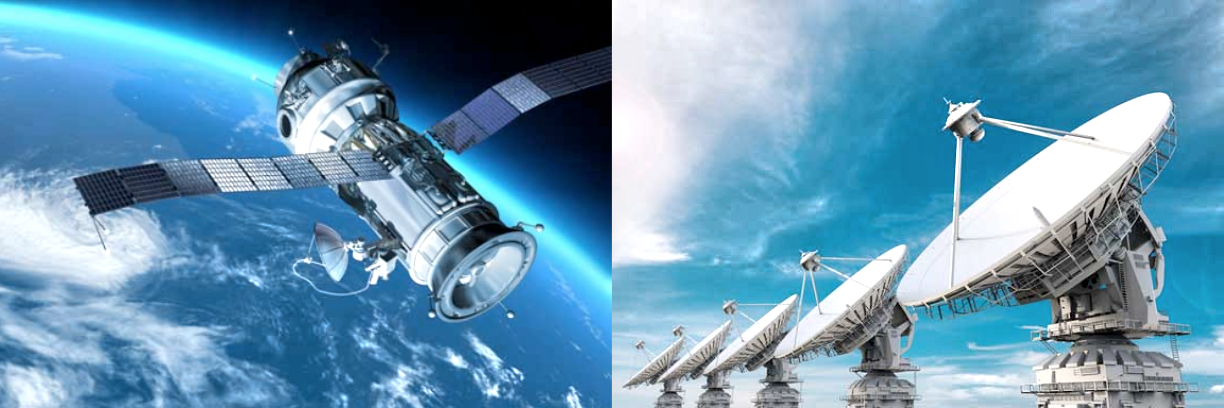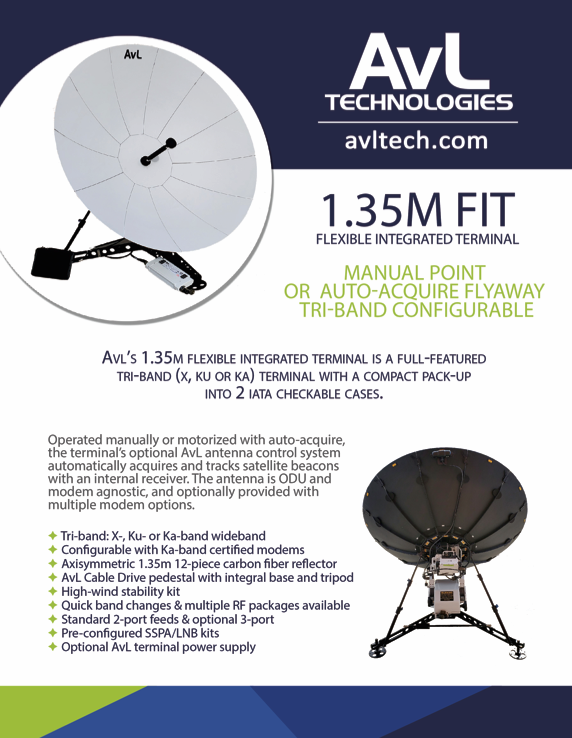A top satellite industry analyst since the late 1990s, Mr. Musey is the president and founder of Summit Ridge Group, LLC., a prominent financial and industry advisory firm. Previously, he was president of a boutique investment bank, Near Earth, LLC, and an award-winning satellite research analyst at Salomon Smith Barney and Bank of America Securities. He took time off in the middle of his career to complete his goal of climbing the highest peak on each continent (the Seven Summits), with a summit of Mt. Everest in 2008. Mr. Musey holds a BA from the University of Chicago, a MA from Columbia University, and an MBA and JD from Northwestern University.
State Of The Industry
____________________________
Good morning, Mr. Musey… thank you for taking the time to speak with us about your firm and your thoughts about recent industry developments. Can you tell us a bit about your background and Summit Ridge Group?

Armand Musey
Summit Ridge Group is a financial and industry advisory firm focused exclusively on the satellite and related telecom and media sectors. I technically began Summit Ridge Group during my mountain climbing sabbatical as a vehicle to do some consulting work — named based on my climbing experience. In 2012, after graduating from law school, I decided to make it a full-time endeavor. We have grown to a team of seven full-time professionals and several additional consultants with specialized skills. We’ve worked on several high-profile valuations, research, and litigation support matters.
What is your view on how the current investment flurry compares to the satellite investment bubble around the turn of the century?
Armand Musey
There are many similarities with the late 1990s. The current environment is a tremendous opportunity for entrepreneurs with an aspiration to raise funds and attempt to realize their vision. There has not been an opportunity like this since the dot-com bubble around the turn of the century. Like the dot-com bubble, many more companies have been funded or partially funded than will likely survive. Most will not have significant marketable assets and will inevitably fold.
However, there are also significant differences. Around the turn of the century, the large satellite failures, particularly Globalstar and Iridium, were caused by an insufficient market because terrestrial technologies progressed faster and leapfrogged the satellite operators. When Globalstar and Iridium began service, the terrestrial wireless industry looked nothing like it did when those satellite systems were planned. Today, the new satellite technologies are going after the existing satellite companies. We see this cannibalization happening with LEOs competing with GEO and new launch vehicles competing with incumbent launch companies.
Is it bad for the satellite industry that new entrants are cannibalizing incumbents?
Armand Musey
I sometimes joke that around 2010 or 2012, the satellite industry finally discovered Moore’s law (which predicted the rapid increase in semiconductor capacity). In reality, a combination of factors converged to change the pace of industry development. High Throughput Satellite (HTS) technology was the first piece to alter the business model for GEO operators materially. The HTS revolution was due, in large part, to the influence of folks adjacent to the FSS industry, primarily ViaSat and HNS. Next, launch prices started to fall, a trend accelerated by SpaceX’s reusable launch vehicles. Falling satellite manufacturing costs related to 3-D printing manufacturing, digital payloads, and other advances added additional fuel to accelerate the virtuous cycle of faster evolution. The entry of billionaires who don’t need to worry about funding, of course, injected extra money into the industry, oiling the wheels of the process. However, that’s where the influence of billionaires begins, not where it ends.
What else did billionaire investors bring to the satellite industry in addition to money?
Armand Musey
Richard Branson, Jeff Bezos, Elon Musk and others brought outsiders’ perspectives. For decades, an aerospace and defense mentality marked by extreme caution dominated the satellite industry, resulting in less risk-taking and slower innovation. This conservative approach made some sense when satellites took four years to build, and launch costs were twice what they are today. Today, however, the lower cost of access to space allows entrepreneurs to take greater risks, especially with lower-cost LEO satellites. Bezos and Musk, in particular, brought a “Silicon Valley” approach to the industry. Their efforts are marked by greater experimentation and iteration that would not have been feasible with the former higher cost structure of the industry. This innovation and experimentation promise to allow the satellite industry to adapt at a rate similar to terrestrial communications technologies.
LEO Systems + Managing Industry Overcapacity
____________________________
What is your opinion on LEO, with the absolute rush to inject constellations into orbit?
Armand Musey
It makes little sense. Industry players are reacting to overcapacity by adding more capacity. Many incumbent operators see pressure from LEO systems and realize they don’t have the cost structure to compete in many segments. Operators conclude that their only solution is to get their own LEO system to lower their cost per bit of capacity. When several operators do this, combined with the new entrants, we will have massive overcapacity that hurts all operators.

It’s particularly insane to invest large amounts to compete with a group of billionaires who can afford to lose money for several years. A project like Kuiper, for example, may have an entirely different business model — perhaps based on selling services on Amazon — and not need to rely as much on consumer subscriptions. How are traditional operators going to compete with that? They probably can’t.
The other risk of so many launches is increased space debris or even a catastrophic chain reaction of collisions, sometimes called the Kessler syndrome, that could make low earth orbit unusable. However, I am cautiously optimistic that awareness of the dangers of space debris is increasing and that manufacturers and launch providers are incorporating improved safeguards.
How can the onslaught of overcapacity be avoided?
Armand Musey
It’s critical. The consumer market is the only market that realistically has the potential to fill the planned NGSO systems. The evidence from the major HTS systems has been that demand for bandwidth in the corporate market is relatively inelastic. Additional capacity has lowered prices, but lower prices have not driven enough demand to offset the lower costs, so revenue has declined. The primary areas where lower prices have unlocked disproportionately higher demand is in consumer end-markets, including in- flight connectivity and cruise ship passenger connectivity. The LEO constellations need to be able to make their systems attractive to consumers globally.
The need for LEO systems to rollout service worldwide is a huge challenge given the multitude of marketing, regulatory, and logistical obstacles the LEO constellations must be prepared to address on a global scale. Moreover, consumers, particularly in developing regions, are very cost-sensitive. Operators will need to address the challenges of global rollout while operating at a fraction of today’s pricing. These challenges make addressing the global consumer market tough for the LEO constellation operators, but that’s the challenge they will need to meet in order to succeed.
Will vertical integration play a role in how the industry digests the coming onslaught of new capacity?
Armand Musey
Yes, and yes. There are two primary types of vertical integration that are relevant here — the first is vertical integration of the marketing channels, and the second is vertical integration of the manufacturing process. Increased vertical integration is generally desirable in both cases.
The industry needs to develop new markets to use the new capacity, plain and simple. Without vertical integration, it’s hard, for example, to motivate distributors to invest in developing these new markets as they are only getting a fraction of the benefit. The operator may also miss nuanced feedback from a distributor that they might get if they had owned their distribution channels themselves. With that said, running a satellite constellation and operating a value-added satellite distributor requires two different skill sets. Satellite operators need to be certain they are up for the challenge, or they risk buying distributors they can’t run well and then lose a lot of money.
Vertical integration is also vital from a technical perspective to ensure stakeholders make the proper investments at various points in product development. A perfect example is SpaceX’s recent breakthrough with lower-cost user terminals. In retrospect, it appears they may have delayed their satellite system a few years ago while they put resources into working out the technical path for the consumer terminals. Only by controlling the investment in both the space and ground segments were they able to coordinate priorities so effectively. Likewise, vertical integration has also helped Viasat and HNS succeed in the consumer market.
SPACs + Their Future
____________________________
What is your take on the many space-oriented SPACs?
Armand Musey
I genuinely want to embrace the SPAC movement. There should be an alternative for investors between investing in companies that went through the traditional IPO process and private equity that increasingly dominates capital raising. But I don’t think today’s SPACs are filling that gap. Too many SPACs appear to be based on unrealistic business plans and potentially driven by opportunism.

How do you think today’s SPACs will end?
Armand Musey
I expect some, probably a minority, that were well thought-out, will do OK. Others, however, will probably tank and end up in years of shareholder litigation. If there are enough shareholder losses and a perception of inappropriate activity, I expect government agencies will put additional regulations around SPACs to restrict current excesses. Further restrictions would be unfortunate as self- regulation is usually more efficient than regulation imposed by the government. But if the SPAC sponsors can’t self-regulate, the government will have little choice but to step in and protect investors.
Should satellite companies use SPAC financing or go through the IPO route?
Armand Musey
It depends on the situation. If you need money quickly, a SPAC might be a good route. If the company is of good quality and can prove itself to investors over time, as the post-bankrupt Iridium has, they will lose the SPAC stigma. But if you can go through the IPO process, it brings additional benefits. In addition to giving investors greater confidence in the company due to the scrutiny of an IPO process, the banks involved also commit to providing market-making for the stock and equity research. The banks involved with the IPO also offer regular follow-up with ideas for additional financing and potential acquisition. These additional services provided by banks involved in an IPO can be valuable to management for growing companies.
Are you down on the industry?
Armand Musey
No. Quite the opposite. I believe we are in the Golden Age of the space sector. The impact of the satellite sector on society over the next 20 years will be far greater than it was over the last 20 years — particularly with respect to consumer connectivity.
I also believe that several killer apps for remote sensing will emerge, allowing society to harness better the enormous amounts of data being collected. However, the current industry players will need to adapt to the new world rapidly. As we know from history, they usually don’t all make it.
summitridgegroup.com


